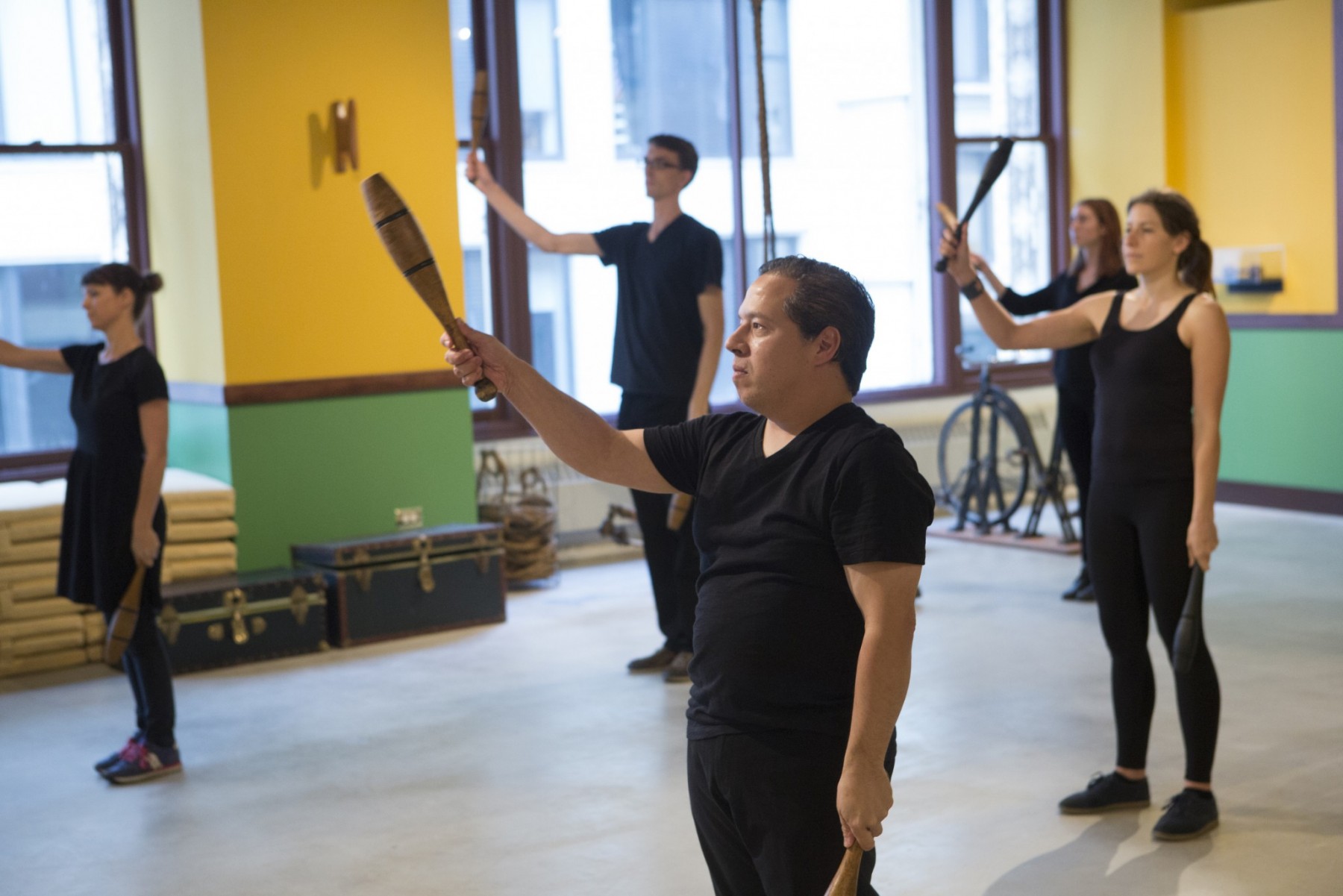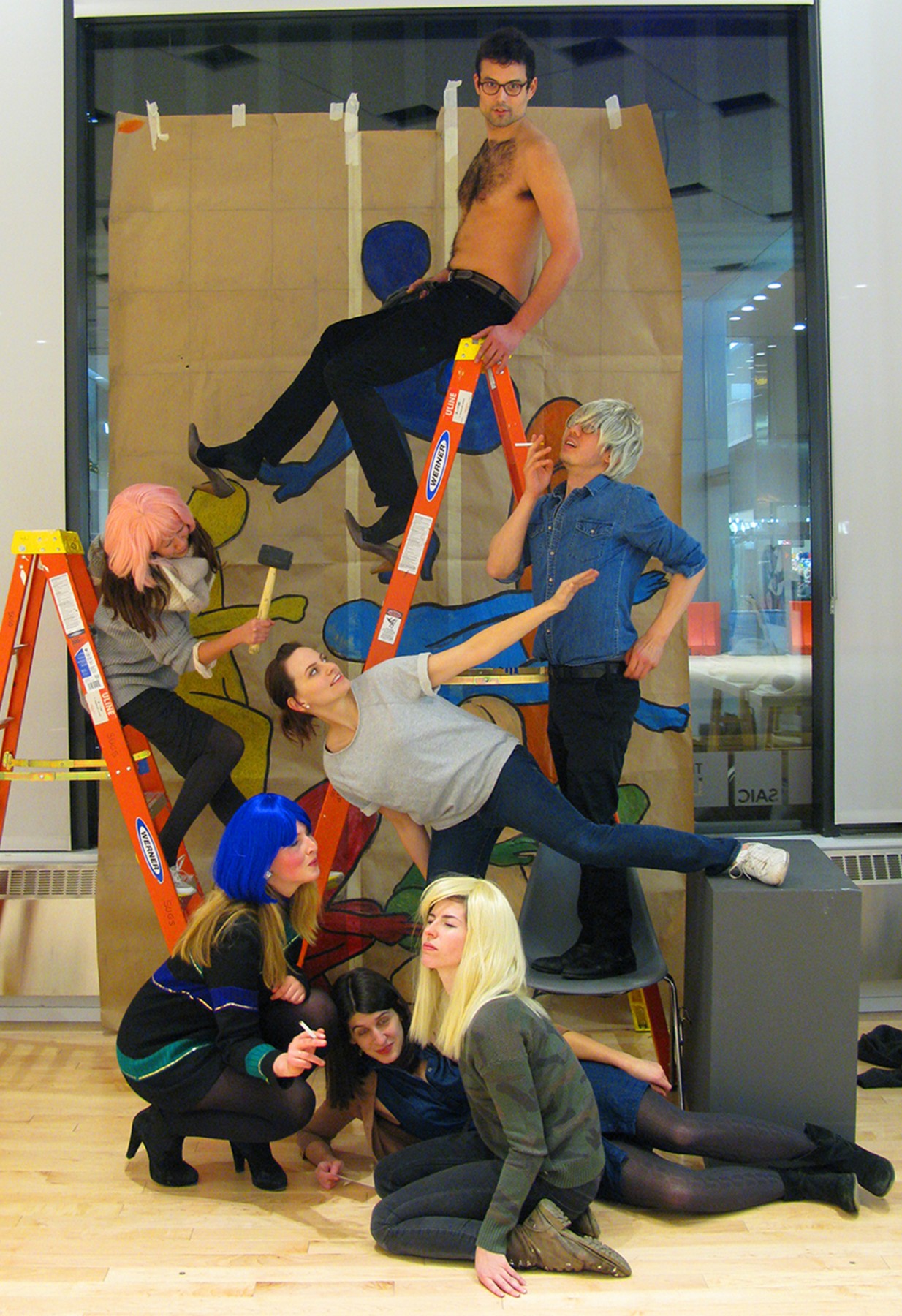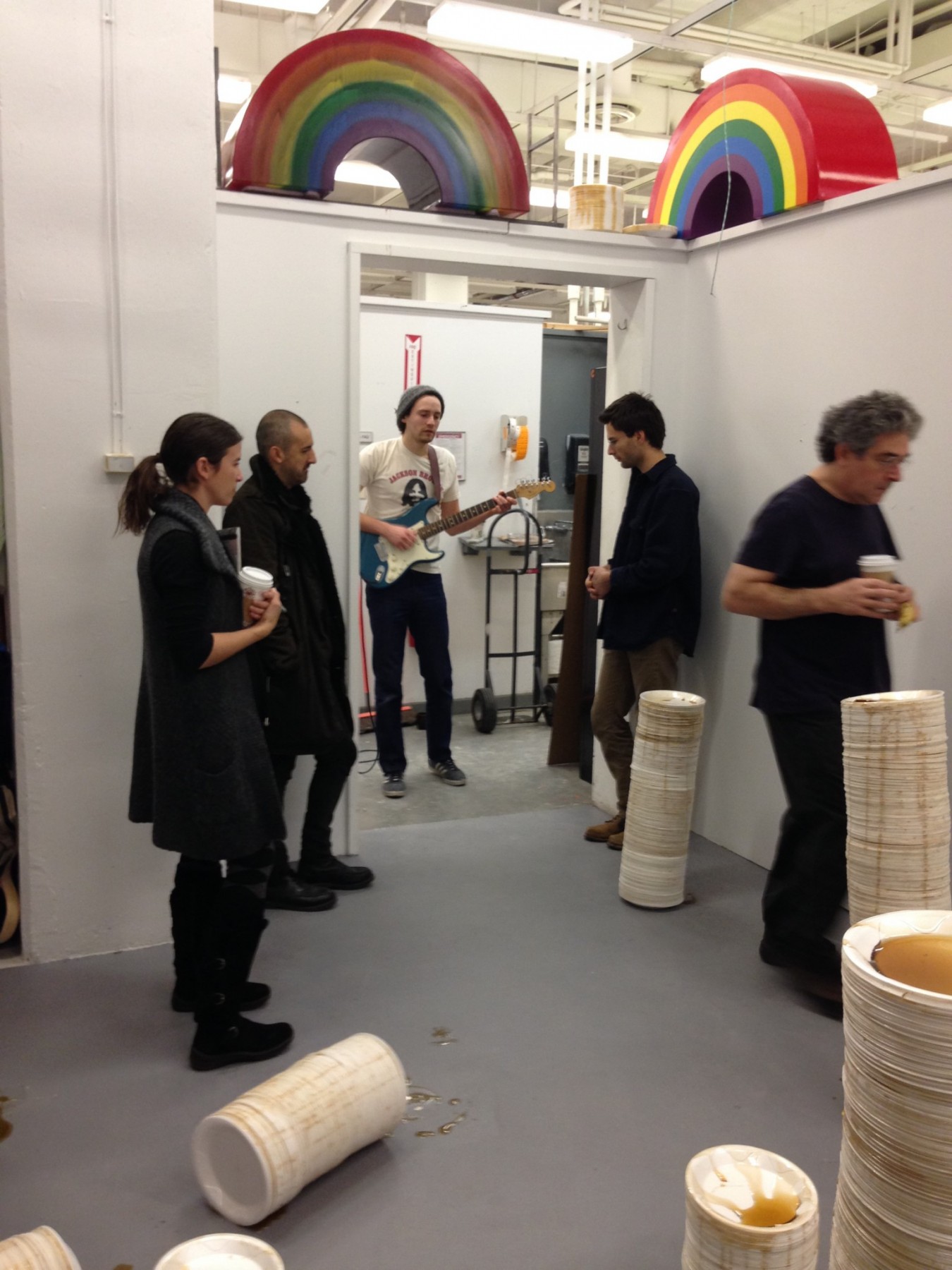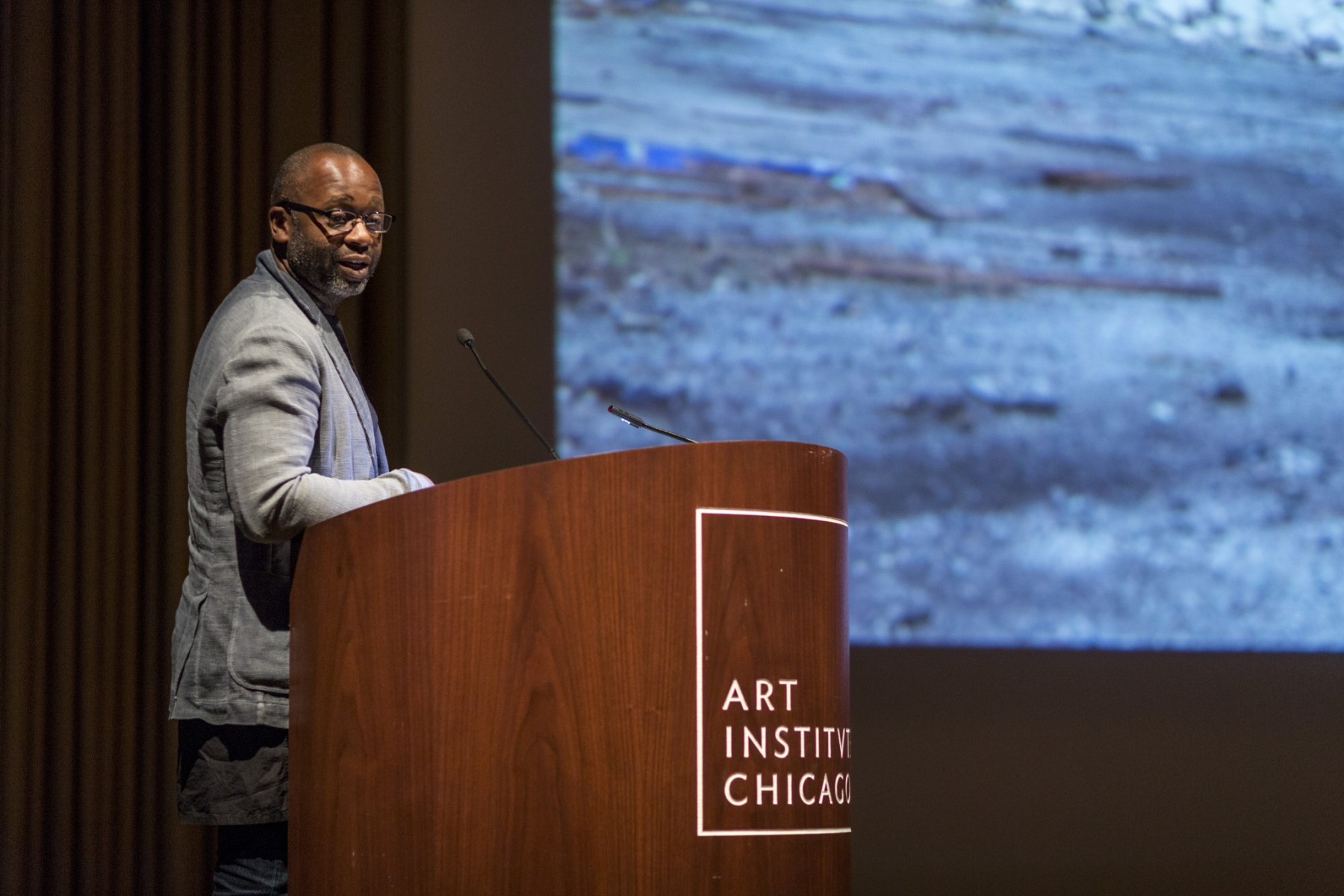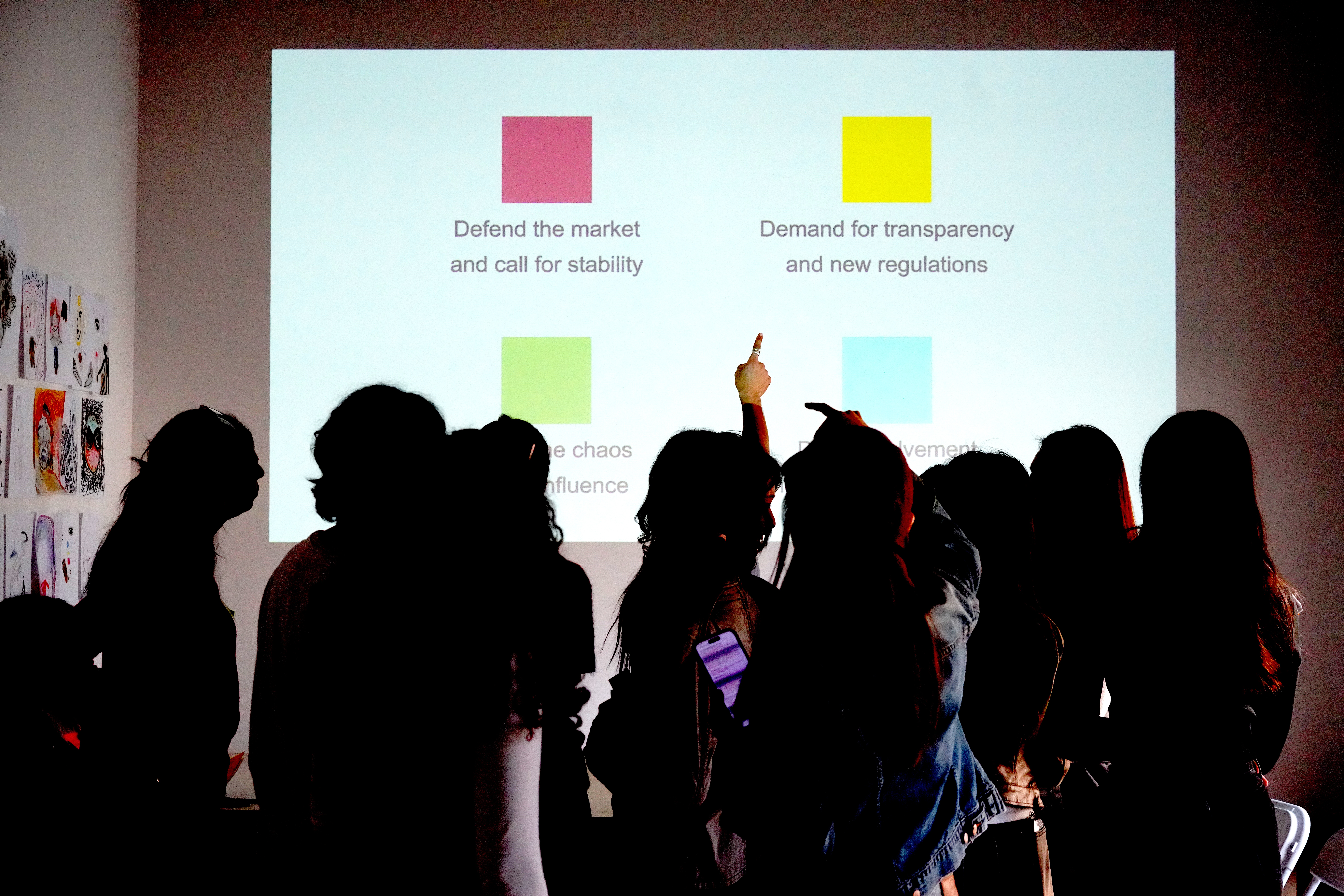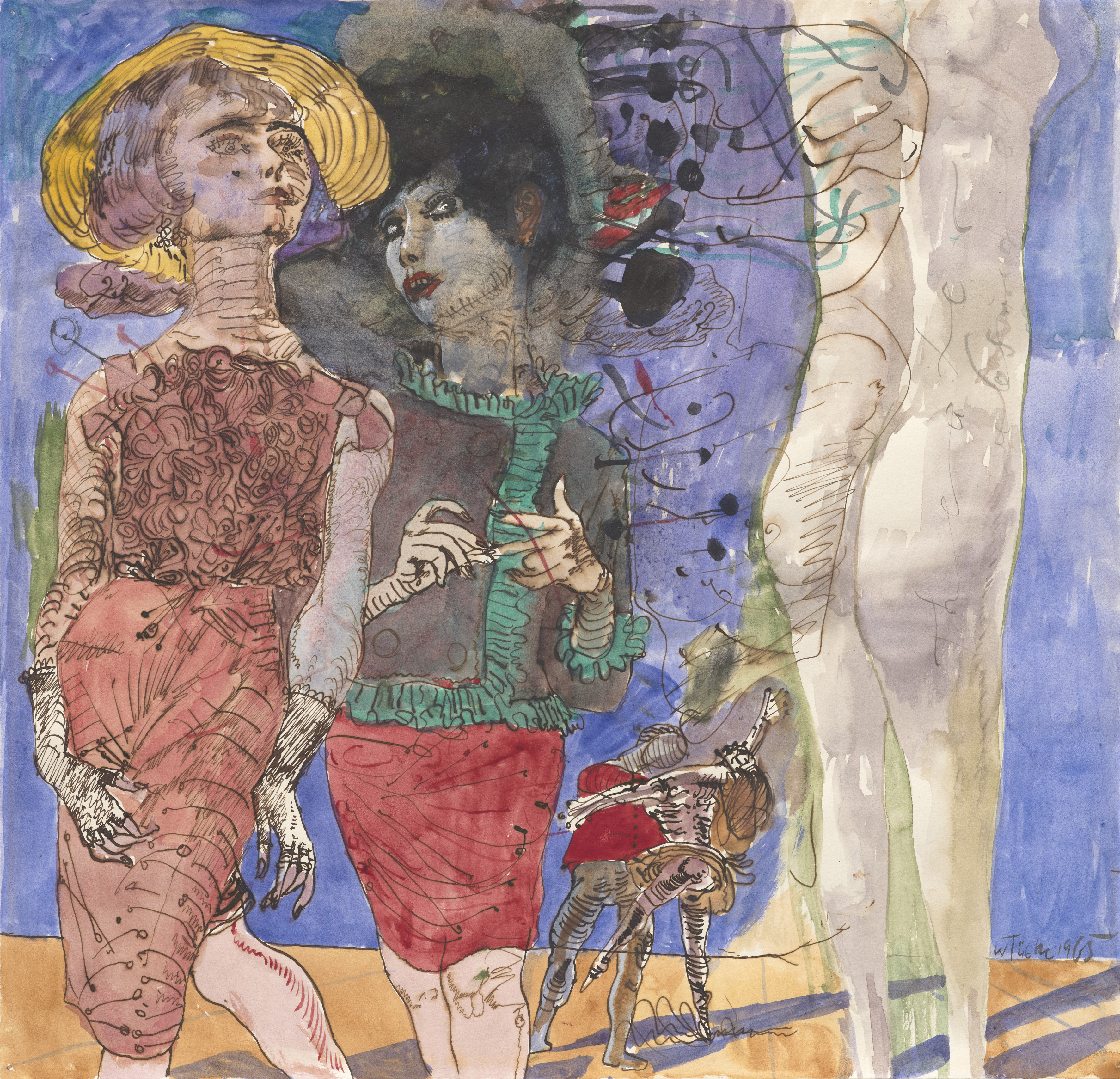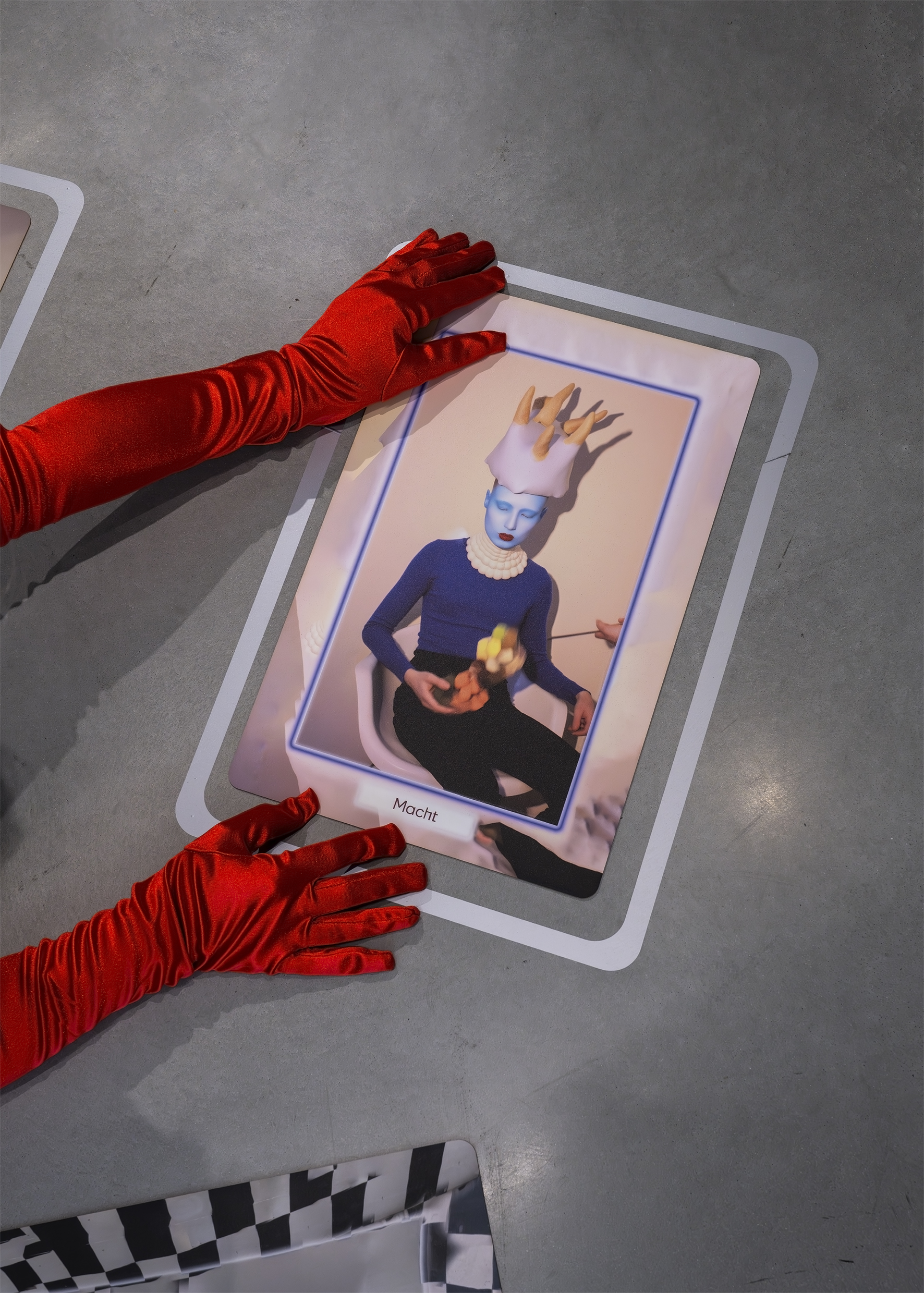Founded in 1866 as the Chicago Academy of Design, The School of the Art Institute of Chicago (SAIC) emerged at a critical moment in the development of two American civic institutions: the museum and the university. In 1872, the school initiated a program of collecting art to further its mission of art education, a purpose shared by both the art school and the museum. By 1882, this hybrid museum-school was christened an “art institute,” as a means to encapsulate these similar yet distinct approaches towards art education, one through instruction and the other through curation and display. SAIC is not the only “museum” school of its time, founded alongside two other prominent institutions, the School of the Museum of Fine Arts in Boston and the Corcoran School of Art and Design in Washington, DC. While the former still functions, more or less, as it did in the late 1870s, the Corcoran was dissolved last year, its collection absorbed into the National Gallery and the school now part of George Washington University’s College of Art and Sciences. As David Getsy, the newly appointed Chair of SAIC’s Department of Art History, Theory, and Criticism, remarked in a recent interview, “[SAIC] is one of the last true museum schools in America.”
The fusion of theory and practice at SAIC makes art historians a crucial resource at the school, and Getsy an apropos voice for what he proudly calls “an art university.” Having an encyclopedic collection within the institution increases the value of art history in a setting where, as Getsy notes, the discipline often receives short shrift: “Art History is not a service department; it is a fully fledged research department […] woven into every program.” Art historians not only teach MFA students in graduate seminars (along with MA students in Art History, Theory, and Criticism) but also serve as advisors for studio practice. And the types of art-making and design programs offered at SAIC are as broad in scope as the museum’s collection, including painting, sculpture, film and moving image, photography, print media, performance, design, architecture, ceramics, fiber arts, sonic arts, and emerging technologies. However, despite the maintenance of a departmental structure, Getsy asserts that SAIC is not siloed. “The key word is interdisciplinary. It is actually a structural commitment. MFA students are not limited by medium, or by conventional boundaries around art-making.”
The school first committed to interdisciplinarity in 1969 when it allowed students to determine their own course of study under faculty supervision. This policy has allowed certain innovations to flourish within the school, as well as new departments to develop, especially in terms of new technologies. For example, SAIC was one of the first schools to own a video synthesizer, giving students and faculty the opportunity to experiment with this then novel tool and the first to found a department dedicated to the intersection of art and technology in 1972. Innovation comes in other guises at SAIC as well. Although craft-oriented, the Department of Fiber and Material Studies (one of the few programs of its kind in the US) offers students a critical-historical perspective on the creation of textiles, as well as insight into how this craft tradition engages with new technologies.
Given the range of proficiencies students can acquire, what kind of artist does the education offered at SAIC produce and attract? Getsy, at first tentative to give too simple an answer, offers a few key points. “First, a conceptual political and ethical understanding of artistic practice…Whatever you do, you should have a conceptually rigorous reason.” Students must learn to think about what they make, an ethos arguably aided by the school’s location “insulated from the rat race of NYC” and virtually untouched by the “pressure of commercialism that comes from the coasts.” For this reason, among others, SAIC “tends to draw students whose practices are non-commercial and social…[those] who want to be challenged around their assumptions about what they do.” In his choice of qualities, Getsy outlines the art historian’s ideal art student as intellectually rigorous, critical, and committed. Of course, markets do exist for such work and SAIC has a track record of alumni/ae including Rirkrit Tiravanija (MFA ’86), Paul Chan (BFA ’96), and Tania Bruguera (MFA ’01), who have redefined the idea of what a successful artist can do. However, given the contemporary financial climate, it remains to be seen how today’s recent graduates might redefine the art economy once outside the bubble of Chicago.
—Andrew Cappetta
Critical Mass at the School of the Art Institute of Chicago
What few art students entering graduate school may realize is that they will not only be tasked with developing the techniques of their practice but also refining how they talk about that practice. (Even the word “practice” itself may be newly meaningful.) Despite that goal of language acquisition, student voices risk getting lost amid the volume of influential faculty, institutional strategy, and the conditions of today’s art-education industry boom, typically represented by its discontent alumni. But, behind the doors of academia, a new art world is in constant development. Let’s, for a moment, ask the fish what they think about their river.
My case study is one of the US’s largest private art colleges, the School of the Art Institute of Chicago (SAIC), where over seven hundred graduate students bounce among several unconnected skyscrapers woven through the urban heart of Chicago and the mega–art museum of its namesake. Each semester brings hundreds of courses with alluring titles like “Experimental Writing on Art,” “The Politics of Knitting,” and the obscure but no less promising “Night Practice.”
“Having too many options,” a second-year Fiber and Material Studies student told me, “is a great frustration to have.”
Collaborations with astrophysicists and enrollment in social justice initiatives are routine extracurricular offerings. Down every hallway is a parade of brightly colored flyers announcing lectures and luncheons, while new tech toys are regularly rolled out: a laser cutter, a vending machine stocked with microprocessors, a powerful Jacquard loom.
For a certain kind of student, those are seductive distractions from the real work of graduate education. “Finding your own place is difficult in a school with so many possibilities,” said Erik Beehn, a second-year Printmaking student. “What should I use the laser cutter for?” he asked rhetorically. “Probably nothing.”
Instead, Beehn prefers to host visiting critics, mentors, and peers in his studio for conversation. Their advice sometimes conflicts—”slow down,” says one; “speed up,” says another—but “I think of them like parents,” said Beehn. “I listen to what my mom says, but I don’t always follow it.”
Beehn entered as a printmaker—an adept one, having worked as master printer at Gemini G.E.L. for five years, but left in order to find content worthy of his technique. At SAIC he started making photographs and paintings. Such interdisciplinary acrobatics are common at the school.
Through talk sessions with his advisor Gaylen Gerber—renowned visual artist and intellectual Midas—Beehn came to realize, among other insights, that he is an artist, not a printmaker. “To break that label seemed liberating,” said Beehn. “To get past departmental or technical labels is important to me.”
The proverbial writing on the wall can be found in the studios. Each of SAIC’s skyscrapers hosts floors of studio sprawl. Grouped by department and painted white, the stalls are not as dehumanizing as they sound. Canvas “doors” strung up between each entryway make the private spaces quite permeable, and accessible for an impromptu hangout. Depending on the time of day the atmosphere ranges from studious to boozy. Some students design their little plot like an office, others like a compost heap. Visitors passing through the canvas curtains during the winter months will likely be offered hot tea from an electric kettle.
“Ask crazy questions” read a to-do list tacked to the studio wall of Jamie Theophilos, a second-year film student.
Another student posted an “Art Skewl Fancy Word List” in their studio to add jargon overheard during critiques: relational, durational, intersectionality, (un)monumentality, and so on. Rather than a cynical jab at the vocab of contemporary art theory, it was more of a reminder to keep language honest—and that deploying, even inventing, the right code at the right time is the job of an artist.
By coincidence, both students identify as transgender, a community familiar with the power of language. In fact, the transgender movement has a formidable presence at SAIC, with the school boasting a 1.5 percent population of trans people compared to 0.2 percent in the general US population. This semester, a thick, seventy-six-page student-authored and illustrated booklet on trans identities titled “Gender is Extraordinary” circulated to all students and staff. It offered a list of forty-five acceptable gender pronouns. In general, gender identification was a leitmotif of conversation, and of art, during my visit to the school, with female students toying with “girliness” and gay male students examining the softer side of masculinity.
“I want to have conversations about the ways we simplify our identities,” said Theophilos. “Do we really want to be like everyone else? I’m ready to have things be uncomfortable,” they told me. “I’m looking to fuck that up.” Their final film project is an interactive online documentary directly from the mouths of trans folk. “Their shame and guilt need to be acknowledged,” Theophilos said—fair game in the struggle to establish ownership of a linguistic utopia.
Hungry for Criticism
At SAIC, criticism is the dark matter that keeps art afloat and spinning. A student is ready for the world when they can justify the reason for their artwork’s existence. “It’s the performance of the self in front of the artwork,” one Painting and Drawing student told me about their regularly scheduled critiques. If not for learning the language of criticism, then everything would be merely “awesome.”
The culture of criticism is so pervasive at SAIC that Michelle Grabner can announce at the start of her painting research studio that “this wave of crits you guys are responsible for language,” without elaboration. On the day of my visit the students got it, and dug deep into a colleague’s drippy porno collages.
“You’ve started to include tacky elements in your work,” noticed one student. “I’ve been thinking of myself as an image-maker rather than a painter,” responded the artist. “I like to play with taste value.” Then: “My advisor is pushing me to be more confrontational.”
The hour-long timeframe for a crit puts pressure on students to think and speak fast. It is also an opportunity to make an impact on faculty. One Painting and Drawing student made bold yet speculative claims about her peers’ artworks. It turns out that Grabner had previously tapped her to assist in curating David Foster Wallace’s contribution to the 2014 Whitney Biennial. Confidence pays off.
In a school that privileges critique, is there a way for students to not get caught in its web? There is, at least, the minimum requirement: the semester’s final critiques—the most nerve-wracking of them all. But most students I spoke with crave critiques, even harsh ones, on a regular basis. “Crits are always a pleasure,” a film student told me. “Hard lessons can raise my consciousness.”
Although it is the most brutal form of critique, the crit seminar remains one of the most popular courses at SAIC. Here, students learn the criteria for making an evaluative claim about art. But—like any art school class—the character of the course depends on the personality of its instructor. One student gushed about Hamza Walker’s crit class, noting that the experience with the notoriously brilliant (and long-winded) Renaissance Society curator is akin to being baptized “in the gospel of Hamza.” Walker leads by example; every moment provides an opportunity to be a critically engaged individual.
After enduring one semester of gentle advice from his first crit class, the Printmaking student Beehn sought tougher love; he wanted to cut his teeth on something more risky. “You don’t want to just get by,” he told me. Beehn had heard about a crit class offered in the Painting and Drawing department that was co-taught by two recent alumni notorious for their tag-team insults and swearing matches. The department is famous for its heated debates: “Are you going to bring knives into the program?” asked one painting instructor during the admissions interview process, a second-year Painting and Drawing student recalls.
In Beehn’s class, an instructor accused a student of not dressing like an artist. Another time, the instructor said she was so uninterested in Beehn’s work that she was going to keep quiet during the entire critique. But, finally, with a two-hour block dedicated to each student, the instructor found the words to eviscerate Beehn’s imagery. Beehn told me the competitive experience helped him defend his artwork, and speak about it with intention.
Critical language is so hotly pursued at SAIC that several MFA candidates in the studio program have decided to concurrently enroll in a second master’s program in Visual and Critical Studies. As the school’s unofficial answer to the artist PhD, a trend sweeping Europe, the dual degree is intended for artists pursuing a research-based practice, or those interested in writing art theory and criticism. In addition to participating in the MFA exhibition, students will also publish a written thesis.
Elsewhere in the school, the crit framework is totally being reinvented, specifically in the newest master’s degree program offered—in Fashion, Body, and Garment (not to be confused with Fiber and Material Studies, although both combine craft with conceptual practices).
In Fashion, students are run through a rigorous fifteen-week critique schedule each semester (that’s one project and crit per week), with quick generative assignment titles like “stock and pile,” “above the clouds,” and “rooter router.”
“You need to get the muscle going. You need to make,” a first-year Fashion student named Benjamin Larose told me. Invoking his advisor: “If Nick Cave can do it, I can do it.”
Fascinatingly, the Fashion program requires students to stage a “destination critique.” Garments cannot simply be exhibited in the workshop or on the runway. Rather, students must source a site for their projects and stage a crit there. Last semester, Grace DuVal, a second-year, led her crit panel to the roof of a skyscraper, to a telescope, where they peered at a model wearing her designs on a distant roof deck. The destination critiques are a smart example of professional practice in action, and reveal that criticism shouldn’t be limited to the white rooms of academia.
Criticism in Action
For some students, the language of the crit is a comfort food cooked by an alternative family of peers. Once outside the studio, many students are faced with the question: But what about the rest of the world? Shouldn’t artists matter to communities that don’t intersect with art school? While this could be the topic of a professional practices course (and there are plenty, especially at the undergrad level), SAIC grad students prefer to learn by doing. During my dip into a single autumn semester at SAIC, several major initiatives to get students out of the studios rolled through the school. They were voluntary, not for course credit, and highly popular.
One, an Art, Science, and Culture Initiative, brought together SAIC’s grad students with physics majors from the University of Chicago’s doctoral program for a speed dating–style event, which resulted in the artists and physicists pairing off to propose a collaborative project and to compete for micro-grants (up to $3,000).
One grantee was Isaac Facio, a first-year student in the Fiber and Material Studies department. Since Facio’s weaving skills are expert—he also works as a textiles technician in the museum, and a perk of employment there means free degree classes at the school—he was a natural yang to the astrophysicist’s yin. Together they are creating a multidimensional weaving that illustrates the invisible structure of cosmic energy using a high-tech loom in an experimental way. Facio’s goal is to merge the technical with the conceptual. Concurrently, he founded the Textile Technology Research Group, which aims to help like-minded textile artists with a penchant for technology seek fundraising opportunities. “We’re learning the hard way all we can do is support each other,” said Facio.
The biggest push of the semester came in the form of “A Proximity of Consciousness: Art and Social Action,” a program pioneered by the school’s in-house curator Mary Jane Jacob, which took the form of an exhibition, a symposium, a four-volume book launch, a student colloquium, and a series of community art performances. The highly visible program, charting over one hundred years of social practice art in Chicago, was intended to be pervasive, and to provide students with an alternative to the romantic notion that artists only spend time alone in the studio.
Community projects, social justice, and activism are at the core of the social practice movement, which is particularly strong in Chicago. Several students told me it’s why they were drawn to attend the school. Despite that semester’s banner social practice theme, some were blissfully unaware of the buzz-worthy program. Blair Bogin, a prolific film student who holes away in her dark studio, looked at me quizzically when I mentioned the phrase “social practice,” and yet she leads community storytelling events and drawing sessions with children at farmers markets on the weekends. Bogin is an example of how a new field can get stalled by its own terminology, an exact issue taken up directly by students who enrolled in the social-practice colloquium.
Visiting artist Theaster Gates opened the season in a packed lecture hall, and J. Morgan Puett, an SAIC alum, brought the DIY spirit of her Mildred’s Lane—a social art experience in rural Pennsylvania founded with Mark Dion—to the school’s seminar tables, dressed like a dining room. One such was placed within the social practice exhibition, where students gathered to chew on the ideas of John Dewey. Some were skeptical. One student called it “a reality show.”
“Isn’t all art social?” asked Katie Kirk, a first-year painting student. “Why do we need this commercialized, branded category of art?” she asked. “We don’t need to institutionalize it.”
This triggered a discussion about the condition of social justice wrapped in an aesthetic package.
“Why are people making art about homelessness instead of just working to solve it?” asked Joshi Radin, a first-year photography student. “Because there’s a symbolic level of acting, and that can reach a larger audience,” she said. “The institutions can create a conversation on a larger scale that can be useful.”
“That creates a proto-epistemology of a social field that does not exist,” responded David Ayala Alfonso, a second-year Visual and Critical Studies student. “There are disciplines that already attend to those needs.”
“I thought it was bullshit,” he said of the social practice colloquium.
“I feel like all we’re doing is talking when we should be making art,” said Kirk.
The conversation dwindled, with the students’ frustration morphing into a consensus over the merits of social practice in general. In a moment of candor or resignation, Radin uttered, “I’m here to make friends.” Perhaps unintentionally, it underscored the fact that shared experiences are a type of language too.
—Jason Foumberg
